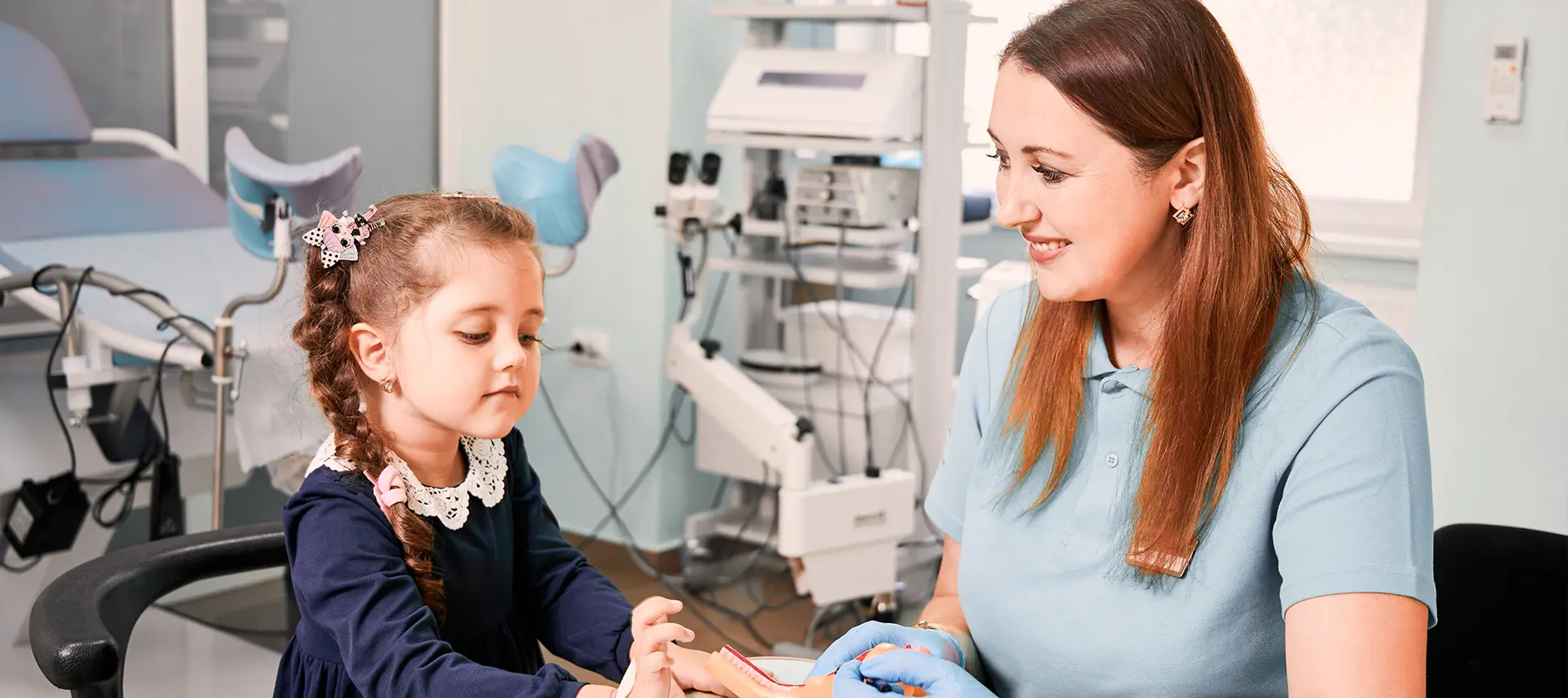When it comes to children’s skin, parents often have plenty of questions – and rightly so. Paediatric dermatologists specialise in diagnosing and treating skin issues in babies, children and teenagers. In this article, we’ll go through the 20 most common questions parents tend to ask paediatric dermatologists. Whether you’re dealing with your baby’s sensitive skin or your teenager’s acne, you’re in the right place.
1. What exactly does a paediatric dermatologist do?
A paediatric dermatologist focuses on diagnosing and treating skin, hair and nail conditions in children – from newborns to adolescents. This includes common issues like eczema, warts, and birthmarks, as well as more complex genetic or autoimmune conditions that affect the skin. They’re trained to understand how these problems can affect children differently than adults.
What sets paediatric dermatologists apart is their specialised knowledge in managing skin problems during different developmental stages. The way a baby’s skin reacts, for instance, is very different from that of a teenager. Paediatric dermatologists know how to adapt treatments in ways that are safe and effective for children.
They’re also experts in making children feel comfortable during appointments. Many skin conditions can affect a child’s confidence or cause discomfort, so having someone skilled in working with young patients really makes a difference. Paediatric dermatologists are there to support both the child and the parents through it all.
2. When should I take my child to see a paediatric dermatologist?
You don’t need a long list of symptoms to justify a visit. If you’ve noticed any skin condition that isn’t improving with basic care or over-the-counter treatments, it’s a good idea to get a specialist’s opinion. Persistent rashes, recurring infections, or any changes in birthmarks or moles are also reasons to book an appointment.
Early intervention can prevent a skin issue from becoming more severe. Some parents wait it out, hoping the problem resolves itself, but sometimes that leads to more discomfort for the child. Paediatric dermatologists are there to step in before that happens and offer child-friendly solutions tailored to your little one.
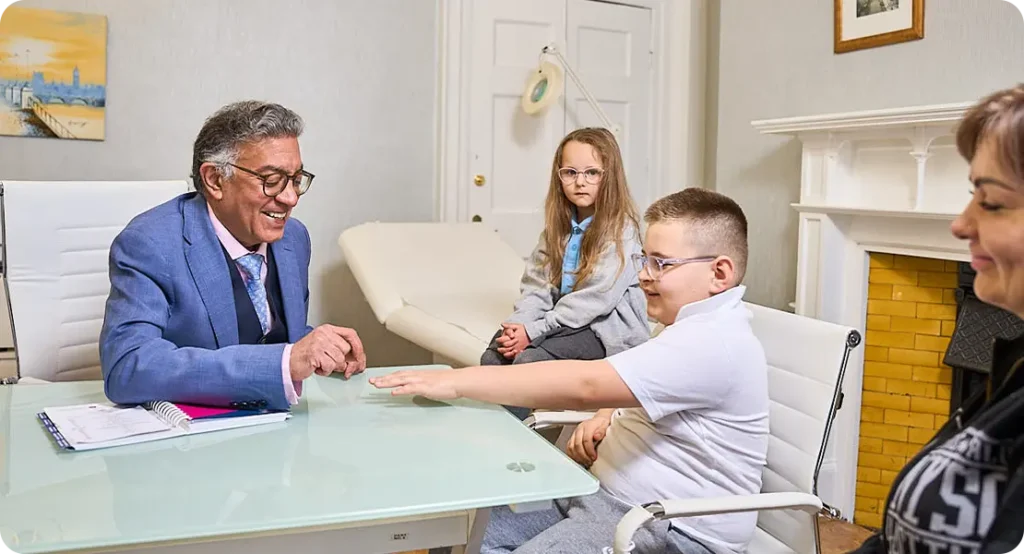
It’s not just about treating existing problems either – they can help with long-term management strategies for chronic conditions like eczema. Plus, if there’s ever any concern about something looking unusual, it’s always better to get reassurance from someone who sees these cases every day.
3. How is a child’s skin different from an adult’s?
Children’s skin is much thinner than that of adults, which means it’s more sensitive and reactive. It doesn’t have the same protective barrier, making it more prone to irritation, dryness and infections. That’s why products that are fine for adults can sometimes cause problems for children.
Because of this sensitivity, many skin conditions in children present differently than they do in adults. For instance, eczema might appear in different areas or be triggered by different factors. Paediatric dermatologists are trained to recognise these subtle differences and adjust treatments accordingly.
Also, children’s skin is constantly changing as they grow, so what works at one stage might not be appropriate a few months later. This dynamic nature is one of the reasons why a one-size-fits-all approach doesn’t work well for kids – and why a specialist’s input is often so helpful.
4. Is it safe to use adult skincare products on my child?
In general, it’s best to stick to products specifically formulated for children. Many adult products contain ingredients like alcohol, strong fragrances or active agents that can be too harsh for a child’s skin. Even something as simple as an adult moisturiser might cause stinging or redness.
Children’s skin absorbs topical products more readily than adult skin does. That means even low concentrations of certain ingredients can have a stronger impact on them. Using age-appropriate skincare ensures your child gets the benefit without unnecessary irritation.
That said, some adult products might be safe depending on the formulation. If in doubt, it’s always worth asking your dermatologist to check the ingredient list. It’s better to be cautious, especially when dealing with sensitive areas or conditions like eczema.
5. How do paediatric dermatologists handle skin treatments for babies?
Babies have especially delicate skin, so paediatric dermatologists take a very gentle approach. They often recommend using the mildest products possible and prefer topical treatments over oral medication when appropriate. The goal is to treat the issue while causing minimal disruption to the skin’s natural barrier.
In many cases, less is more. A simple change in routine – like switching to fragrance-free bath products or adjusting how often a baby is bathed – can make a huge difference. Treatments are chosen carefully and monitored closely, especially since babies can’t always communicate how they’re feeling.
Paediatric dermatologists also focus a lot on educating parents. They’ll explain how to apply creams, how to spot signs of irritation, and when to follow up. It’s a collaborative process that helps parents feel more confident managing their baby’s skin at home.
6. Do children outgrow most skin conditions?
Some skin conditions do improve or resolve as children grow, but not all. For example, infantile eczema often improves by the time the child reaches school age, but for others, it may persist or come and go. The likelihood of outgrowing a condition depends on the specific issue and the child’s medical history.
Conditions like acne usually appear during puberty and then settle down as hormone levels stabilise. On the other hand, genetic or autoimmune skin disorders may need long-term management. A paediatric dermatologist can give you a clearer idea of what to expect for your child’s specific condition.
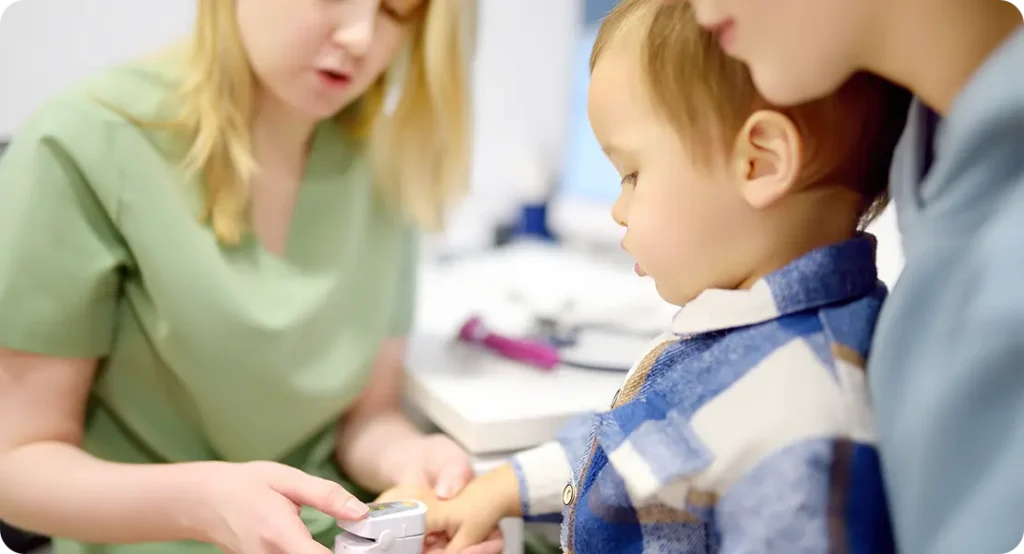
What’s important is ongoing monitoring. Even if something looks like it’s improving, it’s helpful to keep an eye on it and get occasional check-ins to avoid flare-ups or new issues developing. Skin can change rapidly during childhood, so regular support can make all the difference.
7. Is childhood acne different from teenage acne?
Yes, it is – and it can be quite surprising to some parents. Childhood acne, sometimes appearing in toddlers or preteens, is usually more hormonal or related to skin sensitivity. It tends to look different and may not respond to the typical treatments used for teenage acne.
Teenage acne is more linked to hormonal changes that happen during puberty. It tends to affect the face, back and chest and often includes a mix of blackheads, whiteheads and inflamed spots. Treatments for this type of acne often include topical retinoids or antibacterial agents.
Paediatric dermatologists are skilled at identifying what type of acne your child has and selecting treatments that are age-appropriate. They’ll also explain what you can realistically expect from treatment – it’s often a gradual process, and having the right guidance helps keep expectations grounded.
8. How can I tell if a rash is serious?
Rashes can be tricky, and not every rash is cause for panic. If it’s accompanied by fever, spreading rapidly, causing severe discomfort or affecting your child’s ability to eat or sleep, it’s worth getting checked out quickly. Blistering, open wounds or signs of infection like pus are also red flags.
Many rashes are harmless and can be linked to things like heat, mild allergic reactions or viral illnesses. Still, because it’s hard to distinguish between a benign rash and something more serious just by looking, a professional assessment is often reassuring.
Paediatric dermatologists have a trained eye for spotting patterns and symptoms that indicate more than just a surface issue. They might ask about other signs, like changes in mood, appetite, or how long the rash has been present. It’s all part of building a clearer picture to guide the next steps.
9. Are skin allergies common in children?
Yes, skin allergies are quite common in children, especially those with a family history of allergic conditions like hay fever, asthma, or eczema. These allergies can present in different ways – from mild contact dermatitis caused by soaps or detergents to more chronic inflammatory conditions.
Children with sensitive skin are more prone to reacting to everyday products, so it’s not unusual for parents to see a flare-up after trying a new body wash or fabric softener. These types of reactions can usually be managed with avoidance and the right emollient or mild steroid cream.
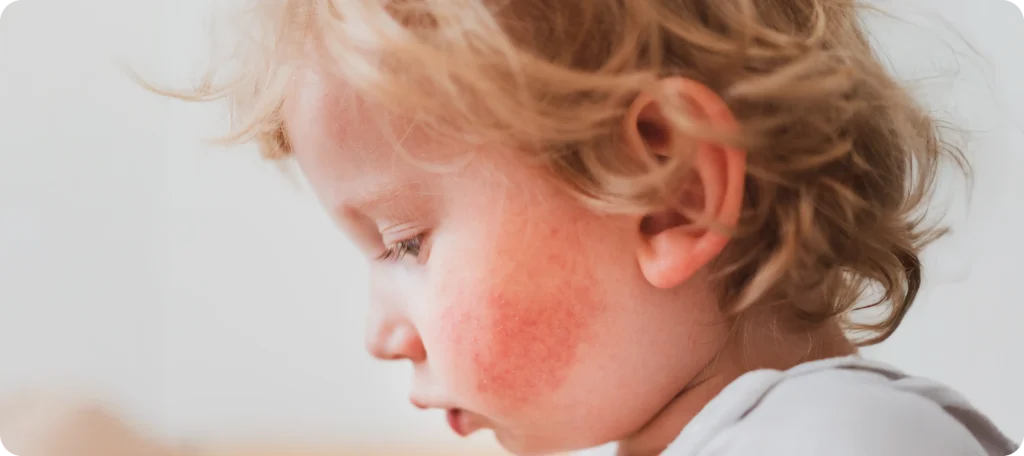
Paediatric dermatologists can perform or refer for allergy testing if needed, helping to identify the triggers more clearly. Understanding what your child is reacting to makes it easier to avoid future issues and keep their skin calm and healthy.
10. How do I prepare my child for their dermatology appointment?
Preparation can make all the difference in helping your child feel comfortable. Start by explaining in simple terms why you’re going – something like, “We’re visiting a skin doctor who’s going to help your skin feel better.” Let them know there may be a few questions or gentle checks, but nothing painful.
Bring along any medications, creams or photos of the condition over time – it gives the dermatologist more context. If your child has specific fears, it’s helpful to share that too so the team can work around it. Most paediatric dermatologists are excellent at making children feel at ease.
Keeping the tone light and positive usually helps reduce anxiety. If your child knows they’re going to meet someone who understands skin and wants to help, it sets the right expectation. And if they’re nervous, let them bring a comfort item like a toy or blanket – it really does help.
11. Can stress cause skin issues in children?
Absolutely – while it’s often overlooked, stress can have a noticeable effect on a child’s skin. Children might not be able to articulate stress the same way adults do, but their bodies can still react with symptoms like flare-ups of eczema, hives or even hair thinning. The link between emotional wellbeing and skin is stronger than many people realise.
School pressures, changes at home or social challenges can all contribute. If you notice your child’s skin worsening during particular periods – like before exams or after a move – it’s worth mentioning that to your dermatologist. They’ll consider emotional factors as part of the bigger picture.
Paediatric dermatologists often work with other healthcare professionals to manage stress-related skin issues. Techniques like mindfulness, relaxation exercises or speaking to a child psychologist can be helpful alongside medical treatment. It’s about supporting your child as a whole – not just focusing on the skin alone.
12. Are laser treatments safe for children?
Laser treatments can be safe for children, depending on the condition being treated and the type of laser used. They’re commonly used to treat things like port-wine stains, certain birthmarks and some types of scarring. Paediatric dermatologists will always consider the child’s age, skin type and the severity of the condition before recommending this approach.
When lasers are used on children, the settings are usually adjusted to be more gentle. In some cases, a topical anaesthetic or even sedation may be used to keep the child comfortable during the session. Safety is always the top priority, and any treatment plan is designed to minimise both pain and risk.
That said, not all skin conditions are suitable for laser treatment in children. It’s a highly individual decision. A paediatric dermatologist will walk you through the potential benefits and risks, and you’ll always have the final say in what feels right for your child.
13. Do paediatric dermatologists treat hair and nail problems too?
Yes, they do! Paediatric dermatologists don’t just focus on skin – they also look after hair and nails. Children can experience a variety of issues, like hair loss, scalp infections, brittle nails or nail infections. These can sometimes be signs of an underlying problem that needs medical attention.
For instance, if your child is suddenly losing hair in patches, it might be due to alopecia areata or a fungal infection. Or if their nails are unusually thick or discoloured, it could point to a nutritional issue or a skin condition affecting the nail bed. These aren’t always obvious to the untrained eye.
A specialist will assess the symptoms and may perform simple tests like a fungal culture or even a biopsy in rare cases. Once the cause is identified, they’ll suggest an age-appropriate treatment. In many cases, early treatment leads to better outcomes and helps restore your child’s confidence.
14. Will my child need ongoing appointments or just a one-off visit?
That really depends on the condition. Some children only need a one-time assessment and treatment plan that can be managed by their GP or at home. Others, particularly those with chronic conditions like eczema, psoriasis or severe acne, may benefit from regular follow-ups to keep things under control.
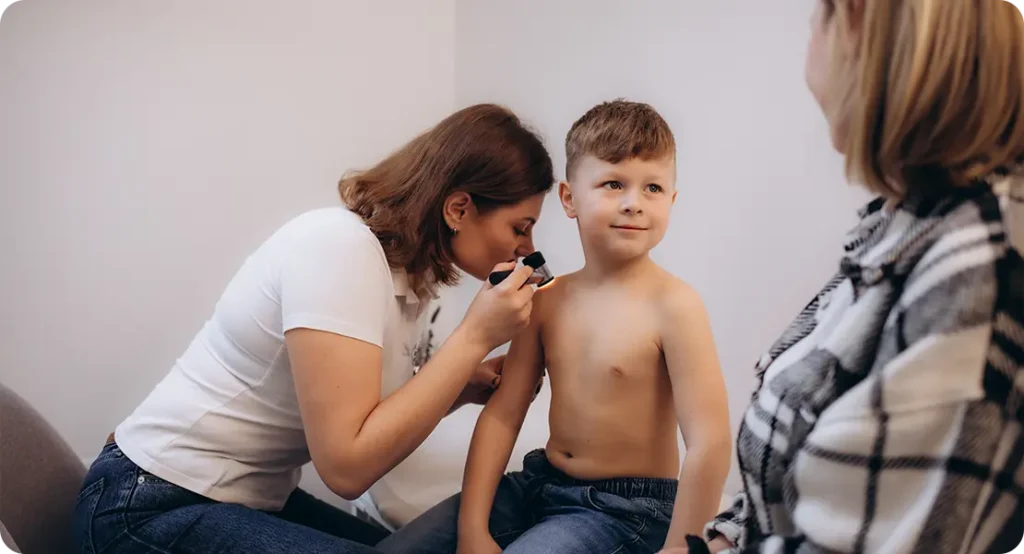
Ongoing care doesn’t always mean constant appointments – sometimes it’s just a matter of checking in every few months. These reviews help to monitor how things are progressing and whether the current treatment is still suitable as your child grows and changes.
Having that continuity with a paediatric dermatologist can be reassuring. It means you’ve got a specialist keeping an eye on your child’s skin health and making adjustments as needed. Think of it as a safety net – one that’s there to support you both through any ups and downs.
15. Are there long-term effects from using steroid creams on children?
This is a very common concern among parents, and it’s completely understandable. When used correctly and under medical supervision, topical steroid creams are safe and effective. They’re an important part of managing inflammation in skin conditions like eczema.
Problems tend to arise when steroids are used too frequently, over long periods, or without proper guidance. That’s why paediatric dermatologists provide clear instructions on where, how much, and for how long to apply them. They’ll also help you distinguish between different strengths and when to step down treatment.
In most cases, if used as prescribed, there are no long-term issues. In fact, delaying treatment for fear of steroids can sometimes lead to worse skin damage from chronic inflammation. Open communication with your dermatologist ensures that any risks are minimised while keeping your child’s skin comfortable and well-managed.
16. How do I know if my child’s skincare routine is appropriate?
A good skincare routine for children should be simple and gentle. If your child is experiencing dryness, irritation or breakouts, it may be a sign that their current products are too harsh or being used too often. The goal is to protect and support the skin barrier, not overwhelm it.
Start with a mild cleanser, a fragrance-free moisturiser, and sunscreen during the day. Avoid over-washing or using exfoliants unless advised by a dermatologist. For babies and toddlers, even daily bathing may not be necessary unless they’ve been sweating or are visibly dirty.
If you’re ever unsure, bring your child’s current skincare products to the appointment. Paediatric dermatologists are more than happy to review the ingredients and recommend changes if needed. Sometimes it’s the smallest tweak – like switching from foaming wash to a cream-based one – that makes the biggest difference.
17. Do skin conditions affect a child’s mental health?
Yes, and this is something that paediatric dermatologists take very seriously. Chronic or visible skin conditions can impact a child’s self-esteem and social interactions. Children might become withdrawn, anxious or even face bullying if they feel different because of their skin.
Even younger children can pick up on how others react to their appearance. It’s not just about how the skin looks – it’s how it makes them feel. Itching, discomfort and frequent treatments can also take a toll emotionally. Recognising this early allows for timely support.
Paediatric dermatologists work holistically and often liaise with mental health professionals if needed. Helping children feel confident in their skin goes beyond just creams and medications – it’s about listening, reassuring and giving them tools to feel better inside and out.
18. Can paediatric dermatologists help with genetic skin conditions?
Yes, paediatric dermatologists are trained to diagnose and manage genetic skin disorders, some of which can be present from birth. These include conditions like ichthyosis, epidermolysis bullosa or certain pigmentation disorders. These conditions can be complex and often require coordinated care.
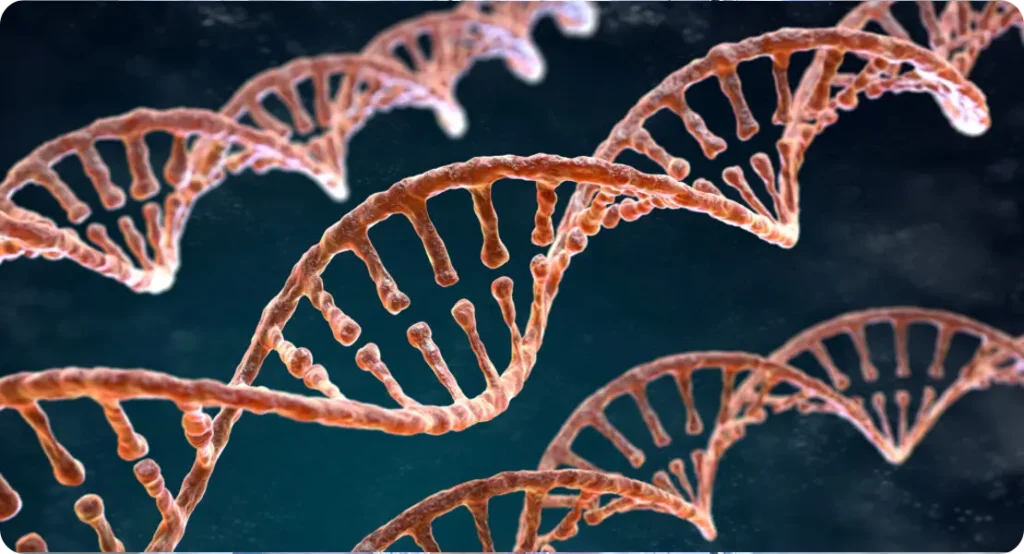
Diagnosis might involve genetic testing or specialist referral, depending on the condition. Once identified, the dermatologist will create a long-term care plan that may involve regular monitoring, supportive therapies and guidance for day-to-day management at home.
While there’s often no cure for these conditions, managing symptoms and preventing complications can greatly improve quality of life. Paediatric dermatologists are well-placed to guide families through the emotional and practical aspects of living with a rare skin condition.
19. Is my child’s skin condition contagious?
This is one of the most frequently asked questions – and it’s a very fair one. Some skin conditions in children are contagious, like warts, impetigo or certain fungal infections. Others, such as eczema, psoriasis or acne, are not contagious at all.
Paediatric dermatologists can help you understand the nature of the condition and whether any precautions need to be taken. In the case of contagious issues, they’ll advise on how to prevent spreading – whether it’s handwashing, avoiding shared towels, or staying off nursery or school for a day or two.
Understanding what is and isn’t contagious helps ease anxiety – for both the child and the parent. It also prevents unnecessary isolation or stigma, especially when children are in close contact with others at school or nursery.
20. How do I choose the right paediatric dermatologist for my child?
Choosing the right specialist can make a huge difference. Look for someone with certified training in paediatric dermatology and a good reputation for working with children. It’s okay to ask about their experience with specific conditions or age groups before booking.
It’s also important to find someone who makes your child feel at ease. A calm, friendly manner and clear explanations go a long way. A good paediatric dermatologist will listen carefully, involve the child when appropriate, and keep parents informed every step of the way.
Don’t hesitate to switch if you feel your child isn’t comfortable – the right fit is important. At the end of the day, you want a specialist who treats your child like an individual and is genuinely invested in helping them feel better.
Summary
Paediatric dermatologists do far more than treat skin rashes – they offer expert, compassionate care tailored specifically to children. From understanding how skin changes with age, to guiding parents through treatments and emotional wellbeing, their role is incredibly valuable. Whether you’re navigating baby skincare, school-time eczema, or teen acne, having a specialist in your corner can make all the difference. Remember, no question is too small – and if it helps your child feel more comfortable in their skin, it’s always worth asking.
If you’d like to speak with a specialist, you can book a consultation with one of our expert paediatric dermatologists at the London Dermatology Centre. We’re here to provide personalised care and support for your child’s skin health every step of the way.
